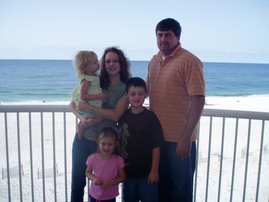
The Prairie Builders: Reconstructing America's Lost Grasslands by Sneed Collard (80 pages; 1book) #4
Collard, Sneed B. (2005 ). The prairie builders: Reconstructing america's lost grasslands. New York: Houghton Mifflin Company.
Award: AAAS/Subaru Science Books and Films Prize for Excellence in Science Books
Grade Level: Middle School
Lexile: 1090L
Author’s Credibility: He has won two awards including AAAS/Subaru/Science Books and Films Prize for Excellence in Science Books and the Washington Post, Children’s Book Guild 2006 Children’s Nonfiction Writer of the Year Award.
Summary/Response: Prairie grasslands stretched from as far south as Texas, north into Canada, east into Indiana, and west into Wyoming. These prairies were thriving ecosystems for many different wildlife species as well as site specific plants. The new U.S. Government signed treaties with the native Americans that lived on these prairies and began settling the areas.
The prairies had all but disappeared by the early 1900s due to farming. This all changed in the late 1980s due to a congressman from Iowa name Ned Smith. He wrote a bill that was passed to purchase several thousand acres for a new National Wildlife Refuge.
Through the hard work of Pauline Drobney and Dr. Diane Debinski and other refuge staff and volunteers, the refuge is growing. Pauline has worked to restore the native plants and eliminate exotic plants. Dr. Debinski is working to bring back a native butterfly, the Regal. Unfortunately the prairie will never be back to its natural state. However, this project serves as an example of how important it is to protect our native ecosystems. These ecosystems should be protected for our future generations.
Standards: Language: Students read a wide range of print and nonprint texts to build an understanding of texts, of themselves, and of the cultures of the United States and the world; to acquire new information; to respond to the needs and demands of society and the workplace; and for personal fulfillment. Among these texts are fiction and nonfiction, classic and contemporary works.
Award: AAAS/Subaru Science Books and Films Prize for Excellence in Science Books
Grade Level: Middle School
Lexile: 1090L
Author’s Credibility: He has won two awards including AAAS/Subaru/Science Books and Films Prize for Excellence in Science Books and the Washington Post, Children’s Book Guild 2006 Children’s Nonfiction Writer of the Year Award.
Summary/Response: Prairie grasslands stretched from as far south as Texas, north into Canada, east into Indiana, and west into Wyoming. These prairies were thriving ecosystems for many different wildlife species as well as site specific plants. The new U.S. Government signed treaties with the native Americans that lived on these prairies and began settling the areas.
The prairies had all but disappeared by the early 1900s due to farming. This all changed in the late 1980s due to a congressman from Iowa name Ned Smith. He wrote a bill that was passed to purchase several thousand acres for a new National Wildlife Refuge.
Through the hard work of Pauline Drobney and Dr. Diane Debinski and other refuge staff and volunteers, the refuge is growing. Pauline has worked to restore the native plants and eliminate exotic plants. Dr. Debinski is working to bring back a native butterfly, the Regal. Unfortunately the prairie will never be back to its natural state. However, this project serves as an example of how important it is to protect our native ecosystems. These ecosystems should be protected for our future generations.
Standards: Language: Students read a wide range of print and nonprint texts to build an understanding of texts, of themselves, and of the cultures of the United States and the world; to acquire new information; to respond to the needs and demands of society and the workplace; and for personal fulfillment. Among these texts are fiction and nonfiction, classic and contemporary works.
Science: Populations, resources, and environments
Illustrations: Photographs are used in the book. These capture the natural beauty of nature.
Access Features: In the front of the book it has acknowledgements and a map of the Neal Smith National Wildlife Refuge. In the back of the book are other books and websites you can visit. There is also a glossary and index.
Related Texts: Invisible Allies: Microbs That Shape Our Lives by Jeanette Farrell
Illustrations: Photographs are used in the book. These capture the natural beauty of nature.
Access Features: In the front of the book it has acknowledgements and a map of the Neal Smith National Wildlife Refuge. In the back of the book are other books and websites you can visit. There is also a glossary and index.
Related Texts: Invisible Allies: Microbs That Shape Our Lives by Jeanette Farrell
The Snake Scientist by Sy Montgomery
Classroom Use: This would be a good book to use when studying the various ecosystems in the United States. It could be used in combination with the other habitats as a compare/contrast model. It also has good information about which plants are native and are not native to prairie lands.
Classroom Use: This would be a good book to use when studying the various ecosystems in the United States. It could be used in combination with the other habitats as a compare/contrast model. It also has good information about which plants are native and are not native to prairie lands.

1 comment:
Can't wait to read this book!
Post a Comment